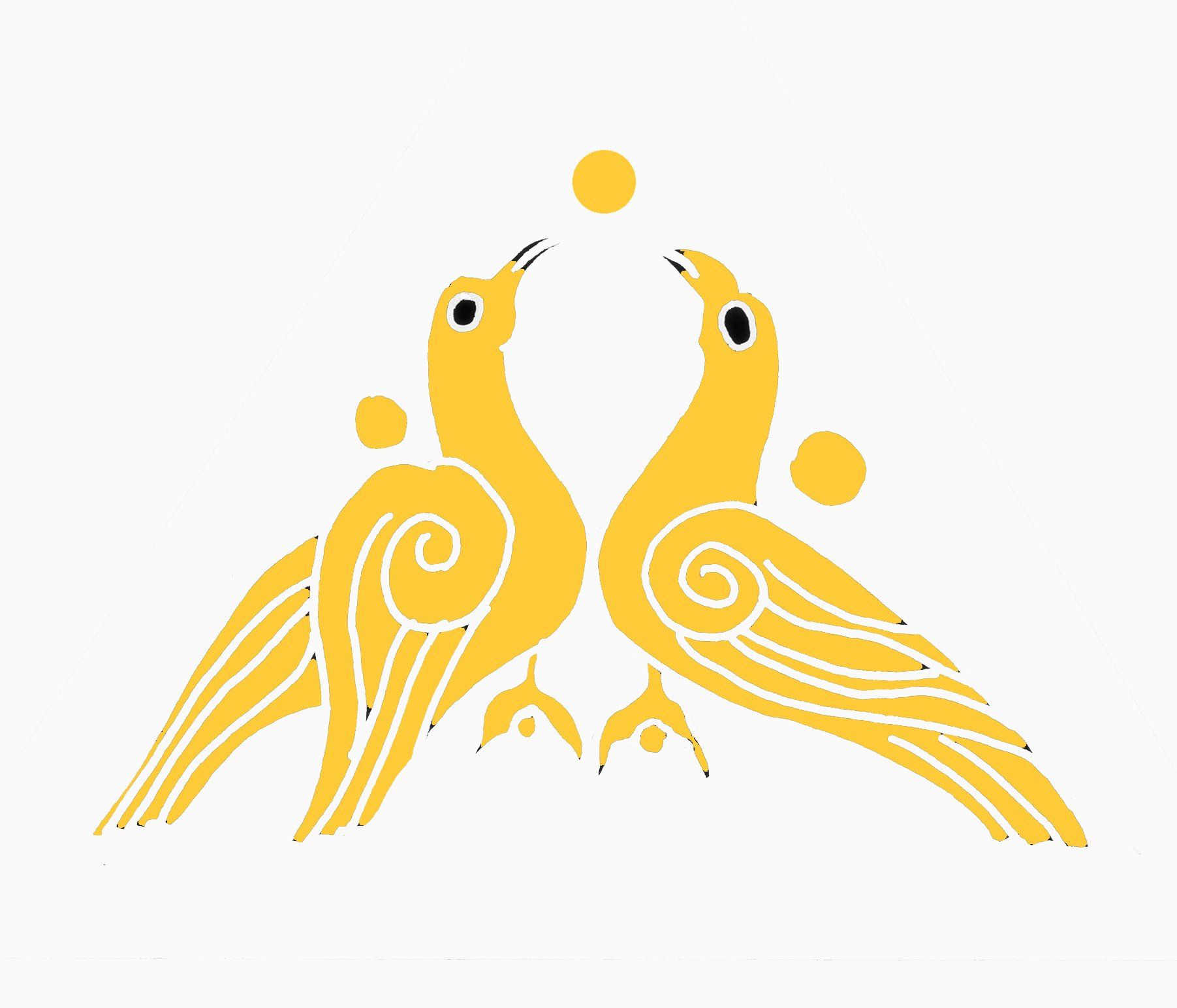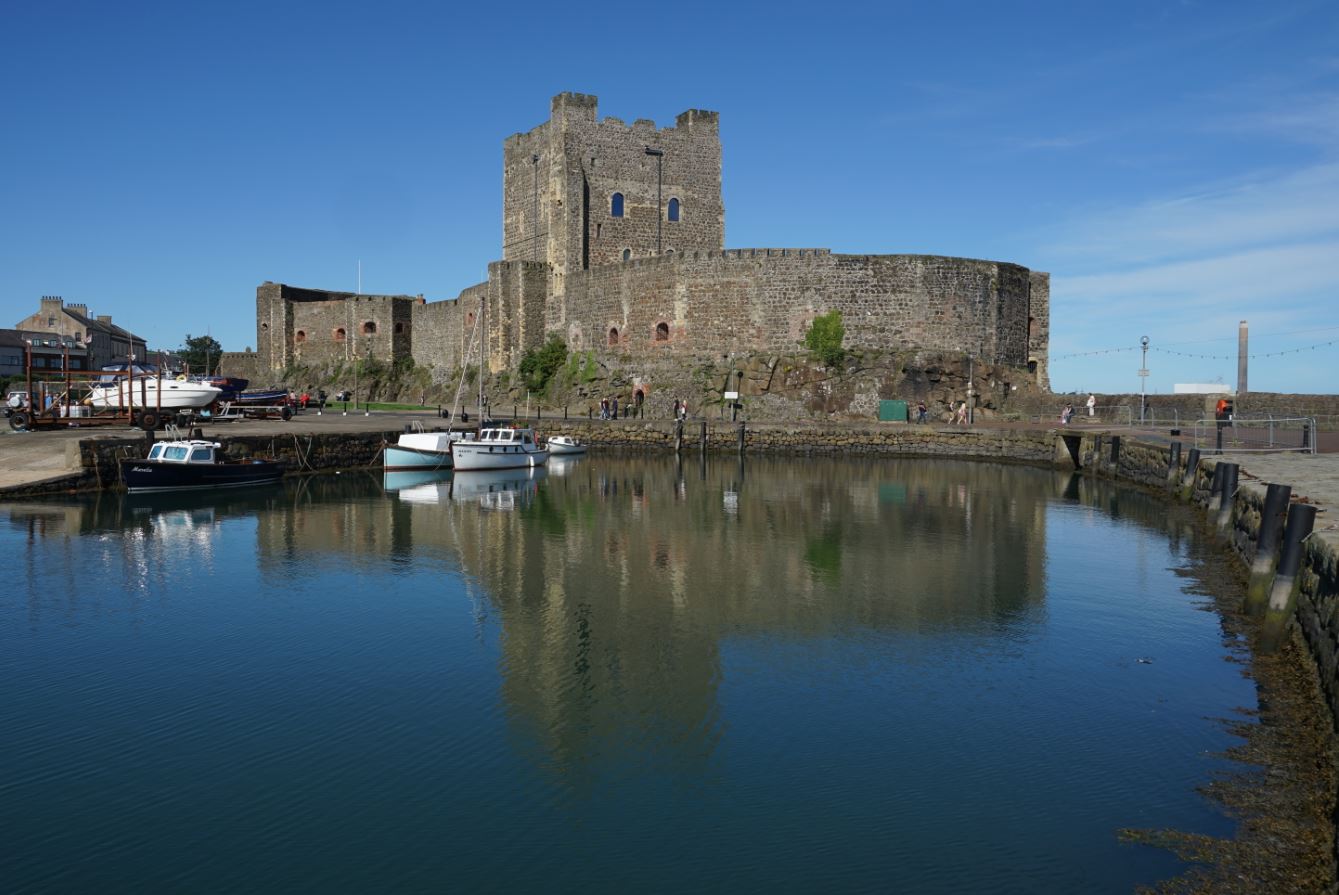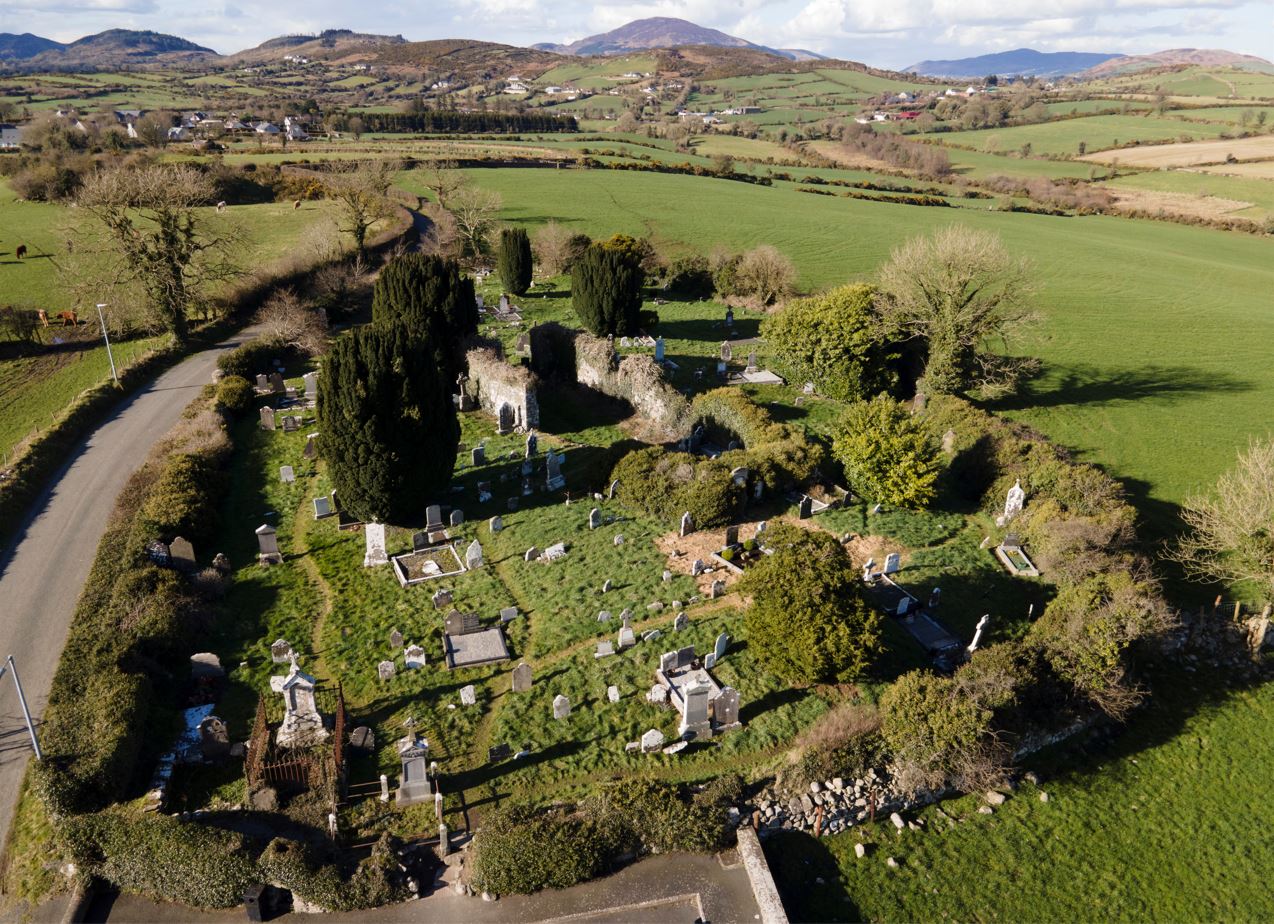1315 – the invasion of Edward Bruce
Around 1140, according to legend, St Malachy
placed a curse on the Bruce family of Scotland. Whether or not this is true, the family certainly took the legend seriously enough for Robert Bruce of Annandale to visit Malachy’s enshrined tomb at Clairvaux in Burgundy around 1272, in an attempt to have the curse lifted. Robert Bruce of Annandale was the grandfather of the more famous Robert Bruce who would become king of Scotland in 1306. This was not the only Irish connection that the Bruce family had. Around 1240, Robert Bruce of Annandale had married Isabel de Clare. Her mother, also Isabel, was in turn the daughter of Isabel and William Marshall. Therefore, Robert Bruce, crowned king of Scotland in 1306, could claim a lineage through his mother that included Strongbow and Diarmaid MacMurrough.
Furthermore, Robert Bruce’s great grandfather was Duncan, Lord of Carrick in Galloway, who had captured Maud de Braose and her son after they fled Carrickfergus, shortly before king John laid siege to the castle there in 1210. As a reward for capturing Maud de Braose, the king had granted Duncan with lands near Coleraine, Co. Antrim. It is quite likely, therefore, that his family still held claims to these lands a century later. This may be one of the reasons that led to an alliance between the two main families in Ireland and Scotland, when in 1302, Robert Bruce married Elizabeth, daughter of Richard de Burgh, the Red Earl of Ulster. Four years later, Robert Bruce was crowned king of Scotland. The Battle of Brannockburn, infamous in Scottish history, saw Robert Bruce’s forces inflict a major military blow against the English forces of king Edward II in June 1314. Robert’s wife, Elizabeth de Burgh, had been imprisoned in London, but after the battle, Robert agreed to release his prisoners in exchange for the return of his wife.
Edward was the younger brother of Robert Bruce who had taken the Scottish throne in 1306. It seems that, as a boy, Edward had been fostered in Ulster, so he no stranger to Ireland. In May 1315 Edward Bruce arrived on the Antrim coast with a fleet of Scots troops that may have numbered as many as 6000. The English government in Ireland was taken by complete surprise by the Scottish invasion of Ulster. Today it is not entirely clear why Edward Bruce invaded Ireland. That his family had lands in Antrim from the time of king John partly explains his move. As Robert’s younger brother, Edward was also forced to make his own path and create his own legacy. To become the king of Ireland must have been very tempting. Similarly, by diverting the English government in Ireland, it also weakened England's resources and military capabilities to threaten Robert’s kingship in Scotland.
Soon after he arrived Edward had himself inaugurated high-king of Ireland. As might be expected, the title was not recognised by the English government in Ireland, but it was equally not well received by many of the leading families in the Gaelic areas outside Ulster. Soon after his arrival, Edward marched south and captured Dundalk. The government forces of the colony were mustered belatedly. Despite his family connections to Edward through marriage, Richard de Burgh, the Red Earl of Ulster advanced on him from the south. With Ulster overrun with Scots, the Red Earl had to look to his lands in Connaught for military support and succeeded in enlisting the support of Feidlim Ó Conchobair. Edward retreated deep into Ulster, where he had the support of the local Gaelic families. The Red Earl’s army camped on one side of the River Bann near Coleraine, while Edward’s army stood on the opposite side. When Feidlim received word that his cousin Cathal had used his absence in Connaught to take the Ó Conchobair kingship, he returned to the west and left the Red Earl to fight his battle with Edward alone. When the two sides finally drew swords in September, it was Bruce who emerged victorious and de Burgh retired to Connaught humiliated.
The way seemed clear for Edward Bruce to march south towards Meath. However, by now he had a new adversary. Sir Roger Mortimer, 1st earl of March, took his title from the fact that he held vast estates in the English held Welsh Marches. He was married to the granddaughter of Geoffrey de Geneville, and through this marriage he inherited Trim castle and the lordship of Meath. Mortimer was a man with good royal connections. He had been knighted by Edward I in 1306 and was present at the coronation of Edward II in 1308. In that year, he came to Ireland to take possession of Trim, and over the next few years appears to have extended and strengthened the castle there. Mortimer was one of the prisoners that Robert Bruce had agreed to exchange for the release of his wife in the aftermath of the Battle of Brannockburn in 1314. Mortimer was in England when he heard of the Scottish invasion, and he hurried to Ireland to defend his lands in Meath. At the beginning of December 1315, the two sides met near Kells in north Meath. Mortimer was defeated, and the way was clear for Bruce to make his way south. He headed for Leinster and the Kildare lands of John fitzThomas.
In January 1316, Bruce met a large army near Athy, led by John fitzThomas and the justiciar, Edmund Butler. It appears that a dispute erupted among the English, and Bruce claimed victory, despite being heavily outnumbered. This became known as the Battle of Ardscull. To add insult to injury, the Scots burned fitzThomas’ castle at Lea shortly later. John fitzThomas traveled to England to confer with Edward II, who created him Earl of Kildare in May 1316. John fitzThomas had at last acquired a title that matched that of his old adversary, Richard de Burgh and had finally succeeded in bringing the Geraldines to the uppermost tier of English aristocracy in Ireland. However, within four months he died near his castle at Maynooth and was buried at the Franciscan Friary in Kildare.
Despite a string of victories against Richard de Burgh in Ulster, Roger Mortimer in Meath and John fitzThomas in Kildare, Edward received little in the way of tangible support from the Gaelic families in Leinster. And, despite his important victories on the battlefield, Edward had not captured any strategic location from which to consolidate his success and plan his next steps. It was still winter, a time of year not usually associated with a lengthy military campaign when food for a hungry army is naturally scarce. To make matters worse, famine had hit Ireland, as well as much of England and Europe. Bruce was forced to retreat north to Ulster and was back at square one. Remarkably, throughout the whole period that Edward was campaigning in Meath and Leinster, Carrickfergus Castle deep in Ulster had withstood a siege by the Scots and Ulster Gaelic. The Scottish and Irish armies might have prevailed on the open field, but they had little success in terms of siege warfare. The garrison defending the castle finally surrendered through negotiation in September 1316.
At the beginning of 1317, the king of Scotland himself arrived in Ireland to assist his brother. Robert arrived with a large army, and soon the Scots were once again on the march south. They advanced through Meath in the direction of Dublin. The citizens of Dublin went into panic; the suburbs were burned down to prevent the Scots from having cover within the houses under the walls that protected the heart of the city; the bridge over the River Liffey was broken, and one of the churches was demolished to provide stones to strengthen the city’s defenses. The mayor of Dublin even had the Red Earl of Ulster imprisoned, fearing that he might betray them as the arrival of his son-in-law seemed imminent. The Scots advanced within striking distance of the city, but quickly abandoned any attempt to lay siege or take the defenses by storm. It had taken over a year for the Scots to overcome Carrickfergus Castle, and they probably had little confidence that they could overcome a city like Dublin. Instead they moved southwest, through Carlow and Kilkenny, and then on to Cashel in Tipperary. By April they had arrived on the banks of the River Shannon near Limerick.
In the same month, Roger Mortimer arrived back in Ireland. He landed at Youghal, Co. Cork, at the head of a large army. News of Mortimer’s arrival must have reached Edward and Robert Bruce as they stood on the banks of the River Shannon and contemplated their next move. They had travelled a long distance, burning and pillaging as they went, but they had little to show for all their efforts. Their troops were hungry and exhausted. As they gazed across to the western banks of the Shannon, it was clear that there was little prospect of securing the Gaelic support in Munster and Connaught that they desperately needed to overcome Mortimer. Gathered on the opposite bank of the river were the Ó Briain forces of Thomond who made it clear that the Scots were not welcome west of the Shannon. The Bruce brothers had little choice but to retrace their footsteps back north. In May, Robert returned to Scotland, leaving his brother to fend for himself. Without even engaging the Scots, Mortimer succeeding in pushing the Scots back to Ulster.
Now Edward Bruce used a different tactic. His main ally in Ulster was Domhnall Ua Néill, who described himself as king of Ulster. In 1317 Domhnall took the interesting step of writing to Pope John XXII in what would become known as the Remonstrance. He asked the pope to revoke the Laudabiliter satis, the papal letter issued around 1155 to Henry II approving an English conquest of Ireland. Indeed, he now asked for papal support to remove the English from Ireland and recognise Edward Bruce as king of Ireland. No doubt, Domhnall hoped to appeal to the pope’s links to the French crown, longtime enemies of the English kings. Written nearly 150 years after the arrival of the Anglo-Normans, the letter provides a fascinating perspective on the English presence in Ireland. It suggests that the Gaelic kings would have gladly held their lands directly from the English crown, but that the leading Anglo-Norman colonists had deceitfully prevented this and had deliberately obstructed the Gaelic chiefs from having direct access to the king of England. Whether this view was entirely honest is debatable, but Domhnall candidly blamed the current situation on the English king himself, claiming that he had failed to protect them from the behaviour of the English colonists in Ireland, and specifically named the late John fitzThomas for his violent behaviour towards his Gaelic tenants and servants. Domhnall also blamed the Cistercian monks at Inch Abbey, founded by John de Courcy, for aggression and violence against the Irish. More generally the letter protested the exclusion of Irish monks from monasteries in the colony, despite the fact that many of them had been founded long before the arrival of the Anglo-Normans. Of course, it had been over a hundred years since an English monarch had set foot on Irish soil, and the Gaelic leaders had interpreted this disinterest as incompetence. So now they felt justified in recognising Edward as king of Ireland instead.
The pope appears to have ignored the Remonstrance, and in October 1318 Edward decided to take to the battlefield once again. He re-emerged from Ulster, but this time his army only advanced as far as the outskirts of Dundalk, where he was met by a large force led by John de Bermingham. This proved to be the decisive battle that had eluded both sides since Edward’s arrival over three years earlier. Bruce was conclusively defeated and killed in the battle. His heart and hand were brought to Dublin, and John de Bermingham personally brought Bruce’s head to Edward II in England. Other parts of his body were displayed around the country. What little remained for burial was reputedly brought to a graveyard on the Hill of Faughart close to the battlefield where he died.
In the three years that Edward Bruce spent in Ireland, as self-proclaimed king, he had succeeded in gaining some support from the local Gaelic ruling families in Ulster and highlighting the weaknesses of the English administration in Ireland, which seemed virtually impotent in the face of the Scottish invasion. However, Edward failed to galvanise the support of enough powerful Gaelic families in the rest of the country. He never set foot in the Gaelic areas of Munster or Connaught. Some of the Gaelic leaders watched from the side-lines and let the English lead the charge against the Scots. Others did rise up against their English overlords when they saw the opportunity, but this was primarily out of self-interest and had little to do with any loyalty to a Scot who proclaimed himself king of Ireland. The famine has often been cited as one of the contributing factors that undermined Edward Bruce’s campaign in Ireland, but in truth, the majority of the ruling families in the Gaelic controlled parts of Ireland had little hunger for taking up arms in support of another foreign king.
After Edward’s death, Robert reputedly visited the Cistercian Abbey of Coupar Angus in Perthshire, Scotland, and provided a lamp and candle to burn perpetually at the altar of St Malachy.



